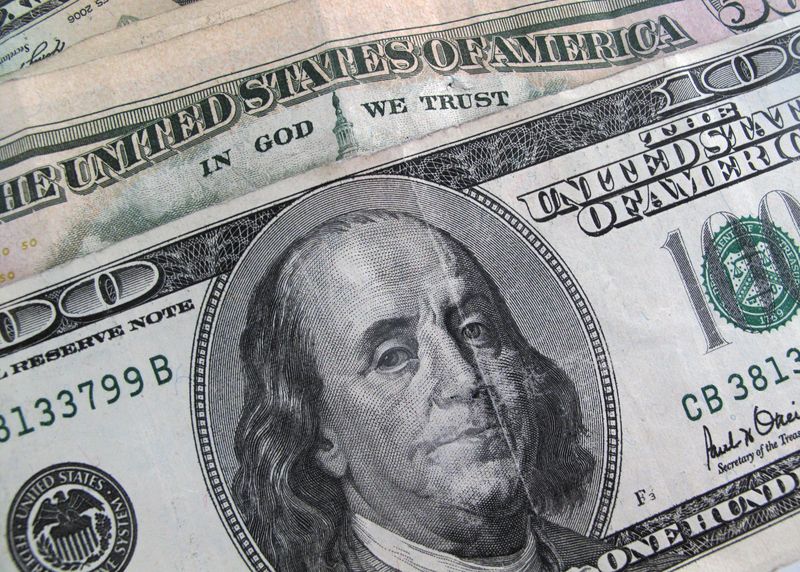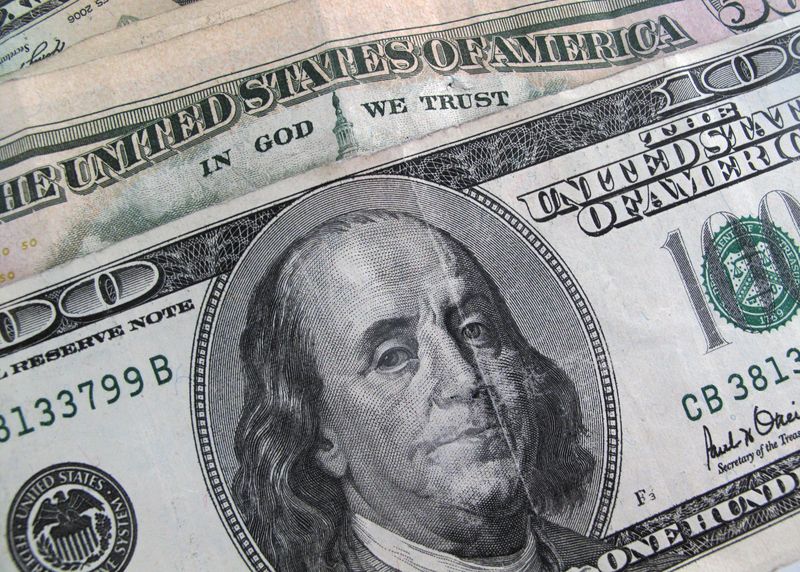Forex
Dollar lower after Powell, crypto climbs as investors eye Trump win

By Chuck Mikolajczak
NEW YORK (Reuters) -The dollar fell slightly on Monday after comments from Federal Reserve Chair Jerome Powell, while cryptocurrencies rose on bets that an assassination attempt on former President Donald Trump lifted his reelection chances.
Trump has presented himself as a staunch supporter for cryptocurrencies, although he has not offered specifics on his proposed crypto policy.
In the aftermath of the shooting, investors narrowed the odds of a Trump victory. Online betting site PredictIt showed bets of an election win for Trump at 67 cents, up from Friday’s 60 cents, with Joe Biden at 27 cents.
The dollar tends to strengthen as part of what is known as the “Trump trade” of assets likely to perform well under a Trump presidency of a hawkish trade policy and looser regulation for certain industries.
But the initial reaction proved to be short-lived, with the greenback falling from its earlier highs.
The dollar also briefly fell sharply as Powell began his speech. He said the three U.S. inflation readings over the second quarter “add somewhat to confidence” that the pace of price increases is returning to the Fed’s target in a sustainable fashion, indicating a move to cut interest rates may be coming soon.
“The market is feeling confident and they were feeling confident before (Powell) spoke about a September rate cut, so I don’t think he really put it on the table, but it’s clearly that it is on the table,” said Marc Chandler, chief market strategist at Bannockburn Global Forex in New York.
“Powell could have made a stronger case that we’ve achieved a soft landing and now let’s avoid a hard landing. That’s the kind of logic that is going to be unfolding now.”
The , which measures the greenback against a basket of currencies, fell 0.07% to 104.22 after rising as high as 104.31, with the euro down 0.09% at $1.0897. Sterling weakened 0.22% to $1.2964.
Markets are completely pricing in a rate cut of at least 25 basis points (bps) from the Fed in September, according to CME’s FedWatch Tool, after data last week showed consumer prices fell on a monthly basis for the first time in four years in June.
Crypto prices jumped, with bitcoin last up more than 6% at $63,808 after reaching a three-week high of $63,838.86. Ether surged more than 7% to $3,417.20.
Against the Japanese yen, the dollar was unchanged at 157.89. The greenback fell to 157.15 as Powell spoke, its lowest since June 17, before quickly rebounding.

The Bank of Japan (BoJ) is thought to have intervened in the market in another effort to buttress the Japanese currency last week after the cooler-than-expected U.S. inflation report. Data from the central bank suggests that authorities may have spent up to 3.57 trillion yen ($22.4 billion) to do so on Thursday.
“Anything that’s going to give the Bank of Japan hope that the Fed might cut rates more or sooner than previously expected is going to give the yen a boost,” said Helen Given, FX trader, at Monex USA in Washington. “It’s all about interest rate differentials, so movement in Fed futures is going to sway yen a lot.”

 Forex3 years ago
Forex3 years agoForex Today: the dollar is gaining strength amid gloomy sentiment at the start of the Fed’s week

 Forex3 years ago
Forex3 years agoUnbiased review of Pocket Option broker

 Forex3 years ago
Forex3 years agoDollar to pound sterling exchange rate today: Pound plummeted to its lowest since 1985

 Forex3 years ago
Forex3 years agoHow is the Australian dollar doing today?

 Cryptocurrency3 years ago
Cryptocurrency3 years agoWhat happened in the crypto market – current events today

 World3 years ago
World3 years agoWhy are modern video games an art form?

 Commodities3 years ago
Commodities3 years agoCopper continues to fall in price on expectations of lower demand in China

 Economy3 years ago
Economy3 years agoCrude oil tankers double in price due to EU anti-Russian sanctions





















